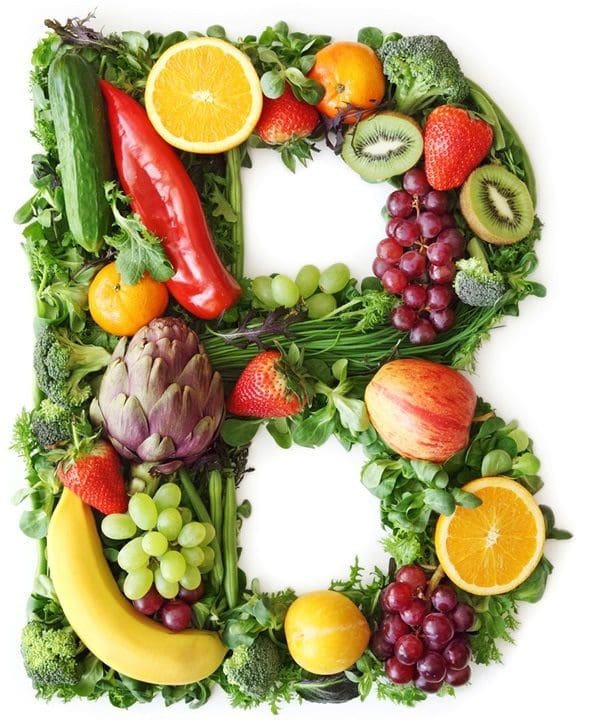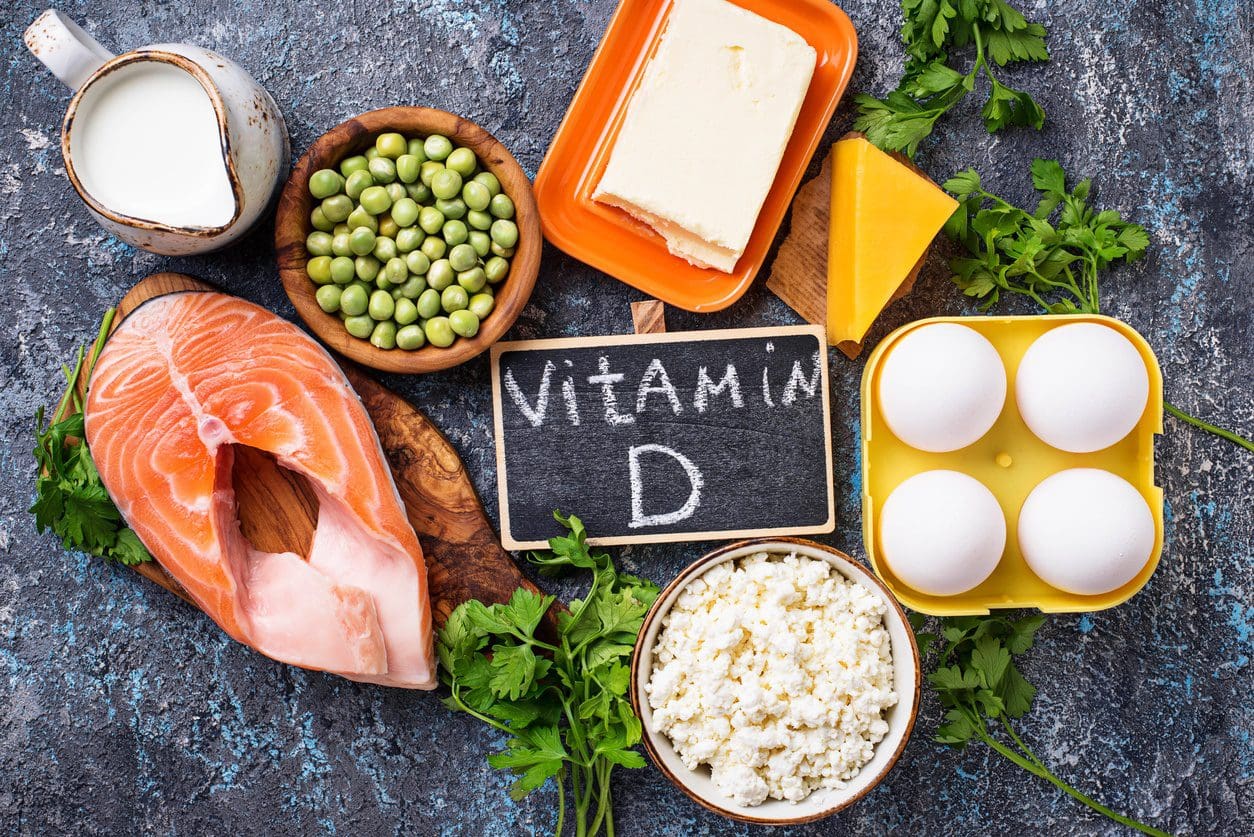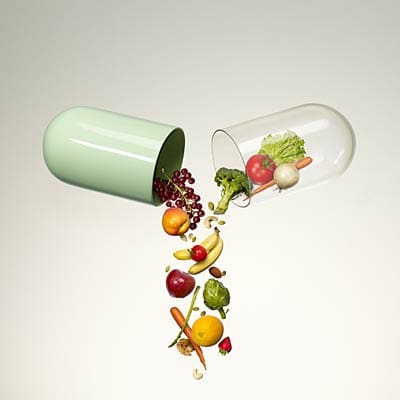Mostly everyone takes their vitamins in any shape and form. It can be from the foods that we eat to the supplements and vitamins pills that we make throughout the day. We can get the boost of micronutrients in our bodies with vitamins and foods. It can help with our diets when we are trying to get a head start in our healthy lifestyle change through healthy, nutritious, whole foods. Without it, it can cause our bodies to react differently with ailments. For example, a person has a healthy lifestyle, but they are feeling out of place in their daily lives; it might be due to their low levels of the vitamins they are not taking. We will be taking a look at the micronutrition in vitamins and supplements in this two-part series for the body.
Table of Contents
The Vitamins
Vitamins are essential for the body since we can’t produce them naturally. When we feel sluggish or horrible, it might be due to the low vitamin intake that we are missing to make us feel better. Here are some of the vitamins that can help your body if you feel a bit weak in life.
Vitamin A

Vitamin A is a fat-soluble compound that is an essential nutrient for the body. It is stored in the liver for later use and is transferred to the tissues when needed. Vitamin A helps maintain the integrity and function of all surface tissues and the eyes. Vitamin A has two forms which are retinol and retinyl esters and provitamin A carotenoids. Retinol and retinyl esters health benefits can help prevent macular degeneration to your eyes, and with the provitamin A carotenoids can have potent antioxidants to fight off free radicals in your body.
Deficiencies: Having a Vitamin A deficiency can lead to blindness in the eyes of some people. Anyone who has a deficiency in Vitamin A can have skin issues like hyperkeratosis and acne. Not only that, but it can increase any infections as well as have pregnancy complications for pregnant women.
Food Sources: Here are some of the foods that are very rich with vitamin A that are all carotenoid-rich in both animals and plants.
- Egg yolks
- Beef liver
- Cod liver oil
- Salmon
- Sweet potatoes
- Carrots
- Dandelion greens
- Cabbage
Vitamin B

All B vitamins are water-soluble, and your body can’t store them. They are used to reduce fatigue and boost your mood. There are 8 B vitamins are vital and have many essential functions for maintaining good health.
- B1 (thiamine): Thiamine helps our bodies metabolism by helping convert nutrients into energy. Some food sources include pork, sunflower seeds, and wheat germ.
- B2 (riboflavin): Riboflavin converts food into energy and acts as an antioxidant in the body. Some of the food sources that are high in riboflavin are organ meats, beef, and mushrooms.
- B3 (niacin): Niacin plays a role in cellular signaling, metabolism and DNA productions, as well as repairs it as well. Some food sources include chicken, tuna, and lentils.
- B5 (pantothenic acid): Like other B vitamins, pantothenic acid helps our bodies obtain energy from the food we eat. It also involves hormone and cholesterol production. Some food sources include liver, fish, yogurt, and avocado.
- B6 (pyridoxine): Pyridoxine helps produces red blood cells in the body. It helps create amino acid metabolism and neurotransmitters for the body. Foods that are highly rich with this vitamin are chickpeas, salmon, and potatoes.
- B7 (biotin): Biotin is highly essential for carbohydrate and fat metabolism and can regulate gene expression in the body. The best food sources that contain biotin are yeast, eggs, salmon, cheese, and liver.
- B9 (folate): Our bodies need folate for cell growth, amino acid metabolism, the formation of red and white blood cells as well as proper cell division. Folate can be found in foods like leafy greens, liver, beans and in supplements like folic acid.
- B12 (cobalamin): One of the best- known of all the B vitamins, B12 is vital for neurological function, DNA production, and red blood cell count. It can be found naturally in animal food sources like meats, eggs, seafood, and dairy.
Deficiencies: Even though taking the B vitamins are essential, there are side effects to taking a high dose of the vitamin, especially B3 and B6. Some of the side effects include vomiting, high blood sugar levels, skin lesions, nerve damage, and even liver damage.
Vitamin C

Vitamin C is one of the most essential vitamins since it can’t be produced by the body. It has so many roles and has been linked to many impressive health benefits. It can help boost antioxidant levels, reduce high blood pressure, and heart disease risk. It can protect your body against any gout attacks and reduce your risk of dementia while improving your iron absorption and boosting your immunity.
Deficiencies: When you don’t take enough vitamin C, it can raise up your blood sugar. Without it, you can develop scurvy if you don’t have enough of vitamin C in your system. You can get really sick, and your immune system will be shot if you don’t take vitamin C.
Food Sources: The most common way to get vitamin C in your body is through citrus fruit. There are lots of foods that contain vitamin C and are very delicious.
- Red and green peppers
- Oranges and orange juice
- Kiwi
- Guava
- Broccoli
- Strawberries
- Brussel sprouts
- Tomato juice
- Cantaloupe
Vitamin D3

Also known as the sunshine vitamin, vitamin D3 is essential for maintaining healthy bones and teeth. It can support the immune system, brain, and nervous system by keeping it healthy. It will even regulate insulin levels and help managing diabetes. However, vitamin D3 can be synthesized to our body whenever sunlight hits our skin.
Deficiencies: Even though the body can create vitamin D, there many reasons that vitamin D deficiency can occur. If a person has a darker skin color and uses sunscreen to reduce the absorption of UVB (ultraviolet radiation B) rays from the sun. They can stop the production of vitamin D. Some of the symptoms of vitamin D deficiency include getting sick more, fatigue, muscle pain, and depression. And if it continues for long periods, it can lead to obesity, diabetes, hypertension, chronic fatigue syndrome, fibromyalgia, and osteoporosis, just to name a few.
Food Sources: There are a few foods that contain vitamin D naturally. And for vitamin D3 it is mostly animal produced.
- Salmon
- Sardines
- Egg yolk
- Shrimp
- Milk (fortified)
- Cereal (fortified)
- Yogurt (fortified)
Vitamin E

Vitamin E is one of the most essential nutrients that is available as a dietary supplement and can occur naturally in foods. It is an antioxidant that can help protect your cells damage and is fat-soluble. Researchers have investigated that vitamin E can be used as a treatment for various degenerative diseases, including high blood pressure, heart disease, and cancer. It is a rare case for a vitamin E deficiency; however, it is a rare condition that is being researched.
Since Vitamin E is the most common nutrient found in most foods, here are some of the foods, including cooking oils that are exceptional.
- Wheat Germ Oil
- Sunflower seeds
- Almonds
- Hazelnut Oil
- Goose meat
- Peanuts
- Mango
Conclusion
So with these vitamins, it can help your body feel so much better in the long run. Without them, our bodies will have various health problems that can hurt us in the long haul. When we take these vitamins, our bodies began to heal properly, and we can see that our moods are a bit better. We can have normal functions without the vitamins because we eat the food that contains them, but when we need that extra boost of energy, vitamins are the way to go.
Cites:
Basavaraj, K H, et al. “Diet in Dermatology: Present Perspectives.” Indian Journal of Dermatology, Medknow Publications, 2010, www.ncbi.nlm.nih.gov/pmc/articles/PMC2965901/.
Chiu, Zelia K, et al. “Patterns of Vitamin D Levels and Exposures in Active and Inactive Noninfectious Uveitis Patients.” Ophthalmology, U.S. National Library of Medicine, 11 July 2019, www.ncbi.nlm.nih.gov/pubmed/31519386.
Choi, Hyon K, et al. “Vitamin C Intake and the Risk of Gout in Men: a Prospective Study.” Archives of Internal Medicine, U.S. National Library of Medicine, 9 Mar. 2009, www.ncbi.nlm.nih.gov/pubmed/19273781.
Ettarh, R R, et al. “Vitamin C Lowers Blood Pressure and Alters Vascular Responsiveness in Salt-Induced Hypertension.” Canadian Journal of Physiology and Pharmacology, U.S. National Library of Medicine, Dec. 2002, www.ncbi.nlm.nih.gov/pubmed/12564647.
Institute of Medicine (US) Panel on Micronutrients, Unknown. “Vitamin A.” Dietary Reference Intakes for Vitamin A, Vitamin K, Arsenic, Boron, Chromium, Copper, Iodine, Iron, Manganese, Molybdenum, Nickel, Silicon, Vanadium, and Zinc., U.S. National Library of Medicine, 1 Jan. 1970, www.ncbi.nlm.nih.gov/books/NBK222318/.
Kubala, Jillian. “Vitamin A: Benefits, Deficiency, Toxicity and More.” Healthline, 4 Oct. 2018, www.healthline.com/nutrition/vitamin-a.
Martel, Julianna L. “Vitamin B1 (Thiamine).” StatPearls [Internet]., U.S. National Library of Medicine, 14 Aug. 2019, www.ncbi.nlm.nih.gov/books/NBK482360/.
Megan Ware, RDN. “Vitamin D: Health Benefits, Facts, and Research.” Medical News Today, MediLexicon International, 13 Nov. 2017, www.medicalnewstoday.com/articles/161618.php.
Meyer-Ficca, Mirella, and James B Kirkland. “Niacin.” Advances in Nutrition (Bethesda, Md.), American Society for Nutrition, 16 May 2016, www.ncbi.nlm.nih.gov/pmc/articles/PMC4863271/.
N/A, Unknown. “Office of Dietary Supplements – Vitamin E.” NIH Office of Dietary Supplements, U.S. Department of Health and Human Services, 0AD, ods.od.nih.gov/factsheets/VitaminE-HealthProfessional/.
O’Leary, Fiona, and Samir Samman. “Vitamin B12 in Health and Disease.” Nutrients, Molecular Diversity Preservation International, Mar. 2010, www.ncbi.nlm.nih.gov/pmc/articles/PMC3257642/.
Ozuguz, Pinar, et al. “Evaluation of Serum Vitamins A and E and Zinc Levels According to the Severity of Acne Vulgaris.” Cutaneous and Ocular Toxicology, U.S. National Library of Medicine, June 2014, www.ncbi.nlm.nih.gov/pubmed/23826827.
Pham-Huy, Lien Ai, et al. “Free Radicals, Antioxidants in Disease and Health.” International Journal of Biomedical Science : IJBS, Master Publishing Group, June 2008, www.ncbi.nlm.nih.gov/pubmed/23675073.
Senoo, Haruki, et al. “Hepatic Stellate Cell (Vitamin A-Storing Cell) and Its Relative–Past, Present and Future.” Cell Biology International, U.S. National Library of Medicine, Dec. 2010, www.ncbi.nlm.nih.gov/pubmed/21067523.
Wong, Cathy. “Benefits of Vitamin C You May Not Know About.” Verywell Health, Verywell Health, 17 July 2019, www.verywellhealth.com/the-benefits-of-vitamin-c-supplements-89083.
Zempleni, Janos, et al. “Biotin.” BioFactors (Oxford, England), U.S. National Library of Medicine, 2009, www.ncbi.nlm.nih.gov/pubmed/19319844.
Post Disclaimer
Professional Scope of Practice *
The information on this blog site is not intended to replace a one-on-one relationship with a qualified healthcare professional or licensed physician and is not medical advice. We encourage you to make healthcare decisions based on your research and partnership with a qualified healthcare professional.
Blog Information & Scope Discussions
Welcome to El Paso's Premier Wellness and Injury Care Clinic & Wellness Blog, where Dr. Alex Jimenez, DC, FNP-C, a board-certified Family Practice Nurse Practitioner (FNP-BC) and Chiropractor (DC), presents insights on how our team is dedicated to holistic healing and personalized care. Our practice aligns with evidence-based treatment protocols inspired by integrative medicine principles, similar to those found on this site and our family practice-based chiromed.com site, focusing on restoring health naturally for patients of all ages.
Our areas of chiropractic practice include Wellness & Nutrition, Chronic Pain, Personal Injury, Auto Accident Care, Work Injuries, Back Injury, Low Back Pain, Neck Pain, Migraine Headaches, Sports Injuries, Severe Sciatica, Scoliosis, Complex Herniated Discs, Fibromyalgia, Chronic Pain, Complex Injuries, Stress Management, Functional Medicine Treatments, and in-scope care protocols.
Our information scope is limited to chiropractic, musculoskeletal, physical medicine, wellness, contributing etiological viscerosomatic disturbances within clinical presentations, associated somato-visceral reflex clinical dynamics, subluxation complexes, sensitive health issues, and functional medicine articles, topics, and discussions.
We provide and present clinical collaboration with specialists from various disciplines. Each specialist is governed by their professional scope of practice and their jurisdiction of licensure. We use functional health & wellness protocols to treat and support care for the injuries or disorders of the musculoskeletal system.
Our videos, posts, topics, subjects, and insights cover clinical matters and issues that relate to and directly or indirectly support our clinical scope of practice.*
Our office has made a reasonable effort to provide supportive citations and has identified relevant research studies that support our posts. We provide copies of supporting research studies available to regulatory boards and the public upon request.
We understand that we cover matters that require an additional explanation of how they may assist in a particular care plan or treatment protocol; therefore, to discuss the subject matter above further, please feel free to ask Dr. Alex Jimenez, DC, APRN, FNP-BC, or contact us at 915-850-0900.
We are here to help you and your family.
Blessings
Dr. Alex Jimenez DC, MSACP, APRN, FNP-BC*, CCST, IFMCP, CFMP, ATN
email: coach@elpasofunctionalmedicine.com
Licensed as a Doctor of Chiropractic (DC) in Texas & New Mexico*
Texas DC License # TX5807
New Mexico DC License # NM-DC2182
Licensed as a Registered Nurse (RN*) in Texas & Multistate
Texas RN License # 1191402
ANCC FNP-BC: Board Certified Nurse Practitioner*
Compact Status: Multi-State License: Authorized to Practice in 40 States*
Graduate with Honors: ICHS: MSN-FNP (Family Nurse Practitioner Program)
Degree Granted. Master's in Family Practice MSN Diploma (Cum Laude)
Dr. Alex Jimenez, DC, APRN, FNP-BC*, CFMP, IFMCP, ATN, CCST
My Digital Business Card


